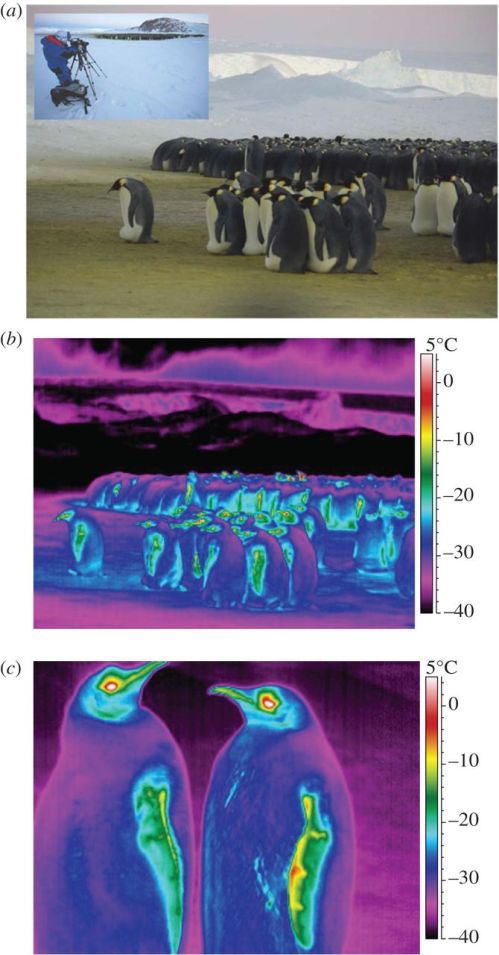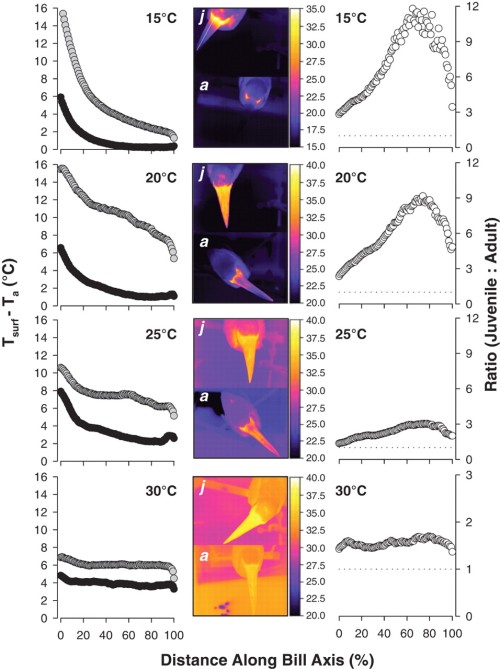Interesting new paper for those studying animal physiology:
Penguins are supremely adapted to life in the extreme conditions of the Antarctic, from their thick plumage to huddling behaviour. Using thermal imaging this paper in Biology Letters (http://rsbl.royalsocietypublishing.org/content/9/3/20121192.short?rss=1) demonstrates how Emperor penguins use their well insulated trunk to manage body heat loss in brutally low temperatures. The temperature of the feathered outer surfaces can fall below the surrounding air due to radiative cooling. Heat is lost only through the relatively exposed flipper and head regions – perhaps it is important to maintain some comparatively unfeathered areas in case of overheating?
When considering the evolutionary and physiological significance of adaptations like penguin plumage it is useful to consider how temperature changes affect energy usage in animals. One way of appreciating this is to measure the animal’s ‘thermo-neutral zone’. Since mammals and birds are homeothermic endotherms they maintain a set, relatively high body temperature at which their biochemical processes are optimised. If the ambient temperature falls, animals need to produce heat, increasing their metabolic rate, or rate of energy expenditure. Conversely if it becomes too hot, strategies such as sweating or panting are employed to maintain body temperature, again increasing metabolic rate. In the laboratory we can calculate how much energy is expended by animals in a range of temperatures by measuring how much oxygen they consume. The range of ambient temperatures that does not elicit an increase in metabolic rate to maintain the ideal body temperature is called the thermoneutral zone. This concept is important when we consider the example of adaptation in bird beak size. While heat loss from the exposed beak is undesirable in the cold Antarctic, (reflected in a reduced bill size in penguins), what about birds that live in warmer climes? In the tropics, the toco toucan uses it’s large bill as a heat exchanger, a mechanism analogous to large elephant ears, to maintain it’s optimum body temperature when ambient conditions fall outside the thermoneutral zone. The bird uses countercurrent heat exchange in the blood vessels supplying the bill to modulate heat transfer with the environment. As you can see in the picture below, the bird reduces heat loss in cooler temperatures and increases heat radiation when too warm.
Figure taken from the 2009 paper in Science (http://www.sciencemag.org/content/325/5939/468.full?sid=402de1be-c045-4cb1-8a27-b6d88892d42f)





















